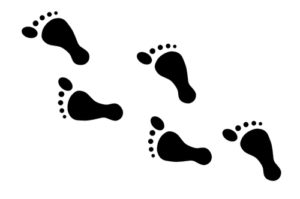 Once you’ve decided that you do want to make a change — whether that’s a new company or a new career — here are some practical steps to take to make your transition move along smoothly.
Once you’ve decided that you do want to make a change — whether that’s a new company or a new career — here are some practical steps to take to make your transition move along smoothly.
The first step is to get your financial house in order. You’ll be in better shape to make a change if you’re on sound financial footing. As you start this process, make sure a financial evaluation is part of your plan. Are there expenses that you can cut out — even temporarily — that will help you stockpile cash in the short term? Maybe you need money for additional training or certifications. Identify how you can save that money so that you have it ready when you need it. If your research shows that you may need to take a pay cut initially to make a job or career move, start cutting back now so that it’s not as big of a shock later.
The next step is to decide on a target — what do you want to do? How will your next job — or career — be different from what you’re doing now? Take some time to identify what you want. Invest in career testing and/or meet with a therapist or career coach who specializes in helping with job change/career change. (This will also help you identify whether you may be suffering from anxiety or depression, which can affect your work, your decision-making ability, and your choices.)
Next, research your new career. Talk to people who are actually doing the job you want to do — especially if you’re moving into a new career field. Research the qualifications for candidates who do what you want to do. Again, consider the idea of creating a Personal/Professional Development Plan (PDP), so you are prepared to make the transition.
Once you decide you are going to make a change, start slowly compiling the information you need and slowly start disengaging yourself from your current job/current employer. You don’t want to take a full box of knick-knacks home at once, but you may start decluttering your files (both paper files and on your computer) and taking some personal items home so that you don’t have to pack them up all at once. Be careful when doing this, however, as it may tip off co-workers — or your boss — if too many personal items start disappearing.
Take calls from recruiters — or reach out to connect with them. However, keep in mind this strategy will only work if you’re staying in the same industry. Recruiters specialize in placement, so they want to put “round pegs in round holes.” They won’t be interested in helping you make the change from being a computer software developer to a teacher.
Finally, one of the best things you can do, once you have a job target in mind, is to engage a professional résumé writer to help you develop a résumé for your desired job. Especially if you are considering a career change, this can help you identify transferable skills that you have to offer and boost your confidence when you see the evidence of your qualifications on paper. Your résumé writer can also help guide you in collecting the information you need to develop your new career documents. Be prepared to invest in yourself and in the development of this document, because your résumé writer will have to spend a considerable amount of time to prepare a résumé that demonstrates how your skills, education, and experience are applicable to your new career path. But it can be a worthwhile investment as a tool as you make a change in your job or career.
Download this free EBook and learn how to negotiate your salary!
If you’re located in the U.S. or Canada, click here to schedule your free strategy session today!
Jennifer Owenby offers her combined expertise as a recruiter along with training as a professional resume writer. Please visit ONB Professional Resumes and LinkedIn Services for additional information and scheduling an appointment.